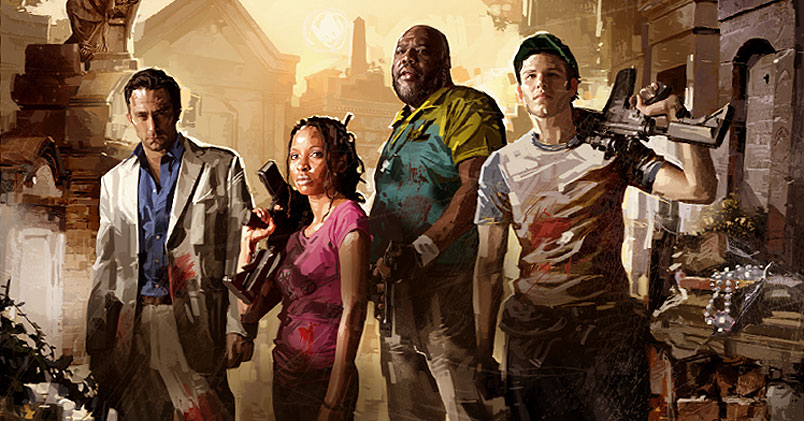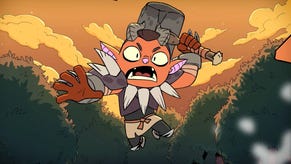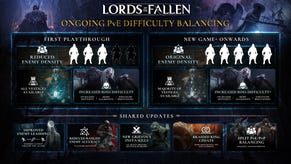How Back 4 Blood can be a worthy successor to Left 4 Dead
Something you might not know about Valve is that its best ideas have often come from much smaller developers. Valve is a talent scout - it finds teams with potential, then incubates and supports them to help produce their best work.
That was the case with Left 4 Dead and Turtle Rock Studios, the Orange County developer which, together with Valve, shaped the definitive co-op shooter.
Once done with Left 4 Dead 2, Turtle Rock climbed out of Valve’s nest and grew to triple-A size itself. Its first flight, the multiplayer monster hunt Evolve, was a bumpy ride, but reasserted the studio’s hallmark: playing unique sides off against each other. Now, it’s returning to the hospital roof where it all started with Back 4 Blood, a clear spiritual successor to its distinguished zombie FPS.
“We are not resting on any past laurels,” creative director Phil Robb says. “Our goal is to take all we’ve learned and push forward. We know that’s a tall order. We know this title has to stand out and we fully intend to make that happen.”
The question is: how do you advance Left 4 Dead? A game that’s simultaneously a decade behind and essentially perfect? Here’s how Turtle Rock might be doing it.
Ambient storytelling
Left 4 Dead fans like to reminisce about the writing on the walls - the safe room scrawlings that told personal stories and elucidated events outside the story of your four survivors. Some graffiti had practical applications, like advice on how to tackle, or not tackle, the Witch. But a lot of it simply served to enrich the world without resorting to cutscenes, an often admired quality of Valve’s work.
That approach extended to the rest of the game, and particularly its voice acting. Environmental storytelling is no longer unique in multiplayer shooters - The Division made sure of that - but very few games do as Left 4 Dead did, taking advantage of repetition to tell different stories through dialogue on every run. Snippets of changing conversation revealed the attitudes of the survivors, and a chance anecdote could alter the tone of an elevator ride from one playthrough to the next.
There’s a real art to this kind of background storytelling - a kind that doesn’t interrupt play but seeps into it gradually. Turtle Rock would be wise to revive it for Back 4 Blood, maturing a form that’s been largely overlooked by its peers - and which Valve no longer appears to want to pursue, outside the call and response of Dota 2 heroes.
Or, Turtle Rock could just do what one Left 4 Dead modder did, and swap out all the text for Jaden Smith tweets. How can mirrors be real if our eyes aren’t real? Make u think.
Asymmetrical multiplayer
Game developers - and perhaps moreso, their players - are obsessed with the idea of balance in competitive games. Designers know that if you think a game is treating you unfairly, you’re unlikely to come back. And more than ever in the age of esports, nobody wants an opponent to be able to blame their tools for their performance.
It stands to reason that balance is most simply maintained if each side picks from the exact same toolbag. But Turtle Rock’s legacy is a rejection of that philosophy. In Left 4 Dead’s Versus modes, one side played the human survivors, and the other a profoundly different force: the Special Infected. One team of four plays a co-op game about vigilance and sticking together, while the other works to divide and conquer, slowing and entrapping their opponents. It’s two games played at once, in opposition, on the same map.
The same was true of Evolve, only the imbalance was more pronounced. Four hunters played a cautious FPS reminiscent of Predator or Alien, while a solo monster engaged in guerilla stealth, hiding their vulnerabilities until they could grow in strength and launch a surprise attack. Turtle Rock isn’t the only designer to plough this uneven field - Red Orchestra 2 is asymmetrical, as is classic board game Scotland Yard, for that matter. But it’s a style the studio has shown an enthusiasm for developing further, and no doubt it will continue in Back 4 Blood.
Playing as the Infected in Left 4 Dead was almost like working as part of a live level design team, defining the threats other players had to face. With any luck, its successor will hop onto that idea’s back, Jockey-like, and steer it in a new direction.
Squads
Not everything has to be a battle royale. It’s bad enough that Planetside, a series which like Left 4 Dead invented a new kind of multiplayer shooting, has felt the need to board the battle bus. But there is something that Back 4 Blood could take from the genre, and that’s the interplay of squads. Fortnite’s experiments in trios were followed up by the extraordinary success of Apex Legends, which proved that a modern FPS can be cooperative as well as competitive.
Hunt: Showdown, meanwhile, has pushed into the same territory, sending co-op duos into swamps to kill AI monsters, all the while fending off fellow teams after the same bounties. It’s no stretch at all to imagine Left 4 Dead’s formula evolving to encompass multiple groups of survivors. What if eight or 12 players were making their way through separate routes of a map, but there were only four seats in the escape helicopter?
Social commentary
Zombie fiction has a long history as political satire - from Night of the Living Dead’s Civil Rights parallels in the ‘60s to Shaun of the Dead’s send-up of life in an urban bubble, its protagonist oblivious to the troubles of a wider world. Left 4 Dead wasn’t free of message, either, even as it pulled from classic genre imagery. In the first game’s timeline, just two weeks after an outbreak, government had already given up on saving survivors, instead bombing the airports in a utilitarian attempt at containment.
In Left 4 Dead 2, meanwhile, executed bodies in a New Orleans park stand out because they show no signs of infection. And in the climactic bridge crossing of The Parish, you might hear an exchange in which Coach encourages the group to make it over the bridge where the “army’s gonna take care of us”. Con artist Nick, a regular voice of scepticism when it comes to authority, counters that they’re just as likely to “line us up against a wall and shoot us”. This is an America in crisis, where a distant federal force makes callous decisions on behalf of the local populace.
It’s unlikely that Back 4 Blood will be an explicitly political game - triple-A projects that shoot for the widest possible audience rarely are - but there’s certainly an opportunity for Turtle Rock to engage with one of the genre’s oldest traditions: zombies as metaphor.






.png?width=291&height=164&fit=crop&quality=80&format=jpg&auto=webp)






